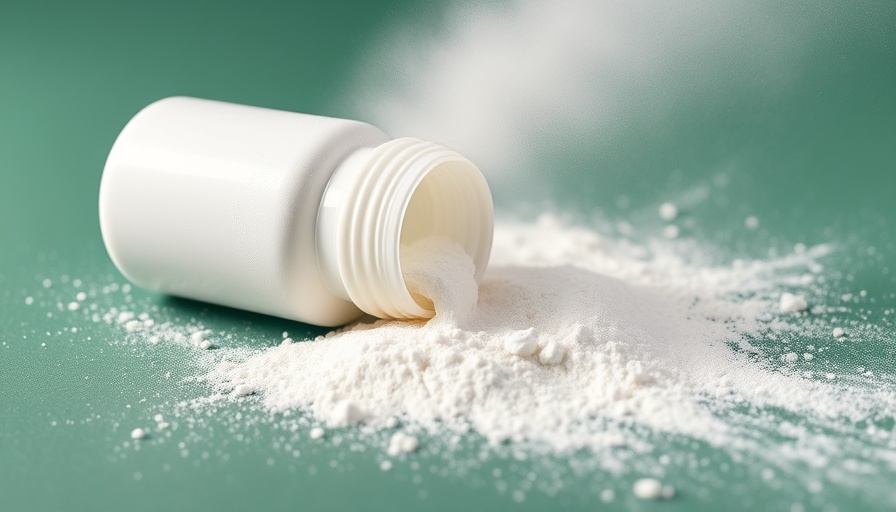
The Potential Ban on Talc: A Shift in Safety Standards
As discussions intensify around the safety of talc, the FDA seems to be taking a significant step toward a ban on this contentious ingredient. The move comes after an expert panel convened to assess the risks associated with talc, which is used widely in cosmetic products, pharmaceuticals, and even some food items. FDA Commissioner Martin Makary emphasized the need for a serious examination of talc, particularly due to its potential carcinogenic properties.
Why the Concern Over Talc?
In recent years, a growing body of research has linked talc use, particularly in the genital area, to an increased risk of ovarian cancer. The World Health Organization’s International Agency for Research on Cancer has classified talc as “probably carcinogenic to humans,” raising alarms among health advocates and consumers alike. This alarming classification adds urgency to the FDA's ongoing evaluation of talc and its alternatives.
Different Perspectives on Talc’s Risks
During the FDA meeting, the expert panelists, including George Tidmarsh, MD, and Nicolas Wentzensen, MD, took turns discussing the fragile landscape of evidence surrounding talc. While some findings suggest a risk of cancer, especially in isolated cases, the consensus among experts is that there needs to be more comprehensive studies. Wentzensen pointed to the complications posed by asbestos contamination, which often coexists with talc, making it harder to pin down talc's direct role in causing cancer.
Considering Alternatives That Prioritize Safety
With the potential ban looming, the FDA panel is investigating safer alternatives that could replace talc in consumer products. Nicole Kleinstreuer, PhD, highlighted magnesium stearate as a favorable option, claiming it has a much safer profile for usage compared to talc. The advantages of switching to non-toxic alternatives promote not just a shift in consumer safety, but also a greater push towards sustainable living measures.
The Future of Consumer Safety Regulations
The discussion surrounding the FDA's regulatory actions could signal a broader trend towards intensified scrutiny of various chemical substances used in everyday products. As environmental and health awareness rises, consumers are demanding brands take responsibility for their ingredients. This evolving narrative around consumer health extends beyond talc, challenging regulators and manufacturers to rethink product safety overall.
How This Affects Consumers Today
For homeowners and eco-conscious consumers aged 30-65, the conversation around talc isn't just an abstract regulatory matter; it also relates to the products they use daily. Being informed about ingredients can empower consumers to make better choices for their health and the environment. As communities become more engaged in health advocacy, the push for transparency in product ingredients will likely increase.
Making Informed Decisions
As the FDA considers these findings, advocates encourage consumers to seek alternatives to talc in their daily hygiene and cosmetic routines. Many brands are increasingly labeling their products as talc-free, providing options that align with the health-conscious lifestyle. For those looking to lower their exposure to potentially harmful chemicals, this shift paves the way for greater health security.
"The shift towards safer alternatives like magnesium stearate is a reminder that our health plays a crucial role in sustainable living practices." - Nicole Kleinstreuer, PhD
While the FDA's eventual decision will significantly affect the market, consumers are already taking steps to ensure their well-being is prioritized. Keep an eye on the changing landscape of product safety, and don’t hesitate to make informed decisions in favor of healthier alternatives.
Ultimately, as we navigate the complexities of health regulations, remember that awareness fosters empowerment. Make informed choices, advocate for your health, and encourage those around you to do the same.
 Add Row
Add Row  Add
Add 



Write A Comment